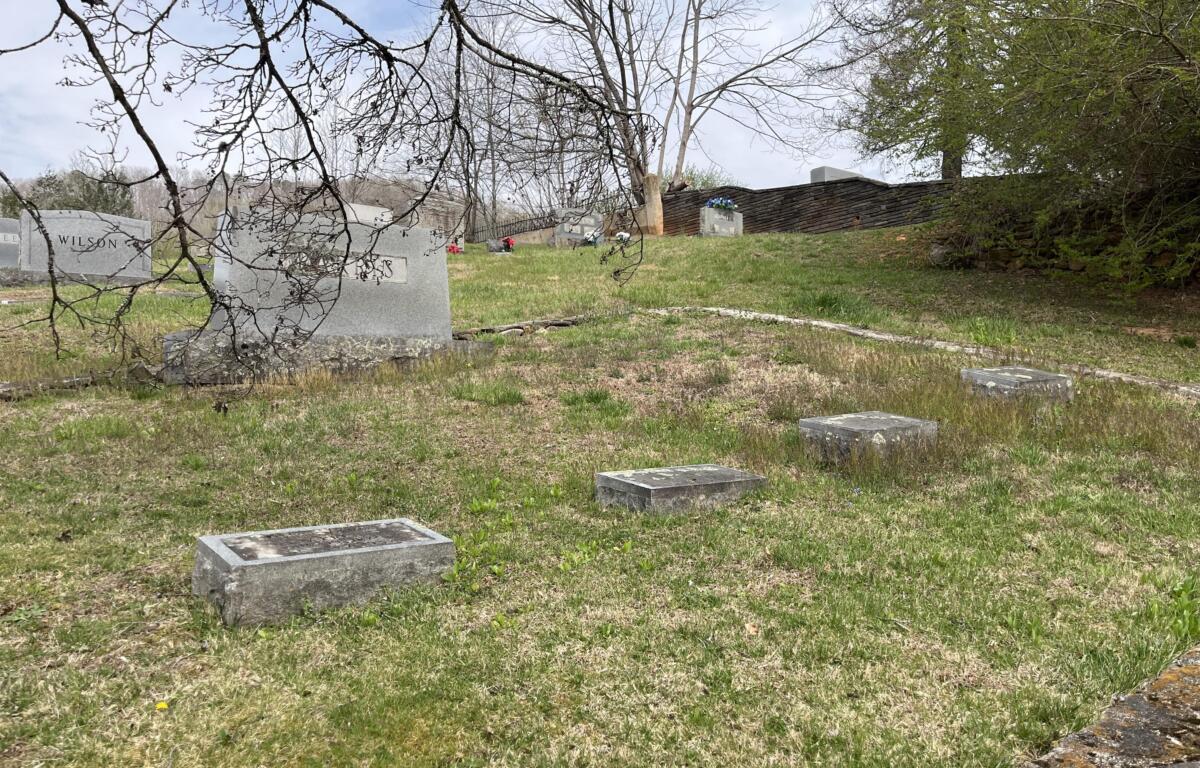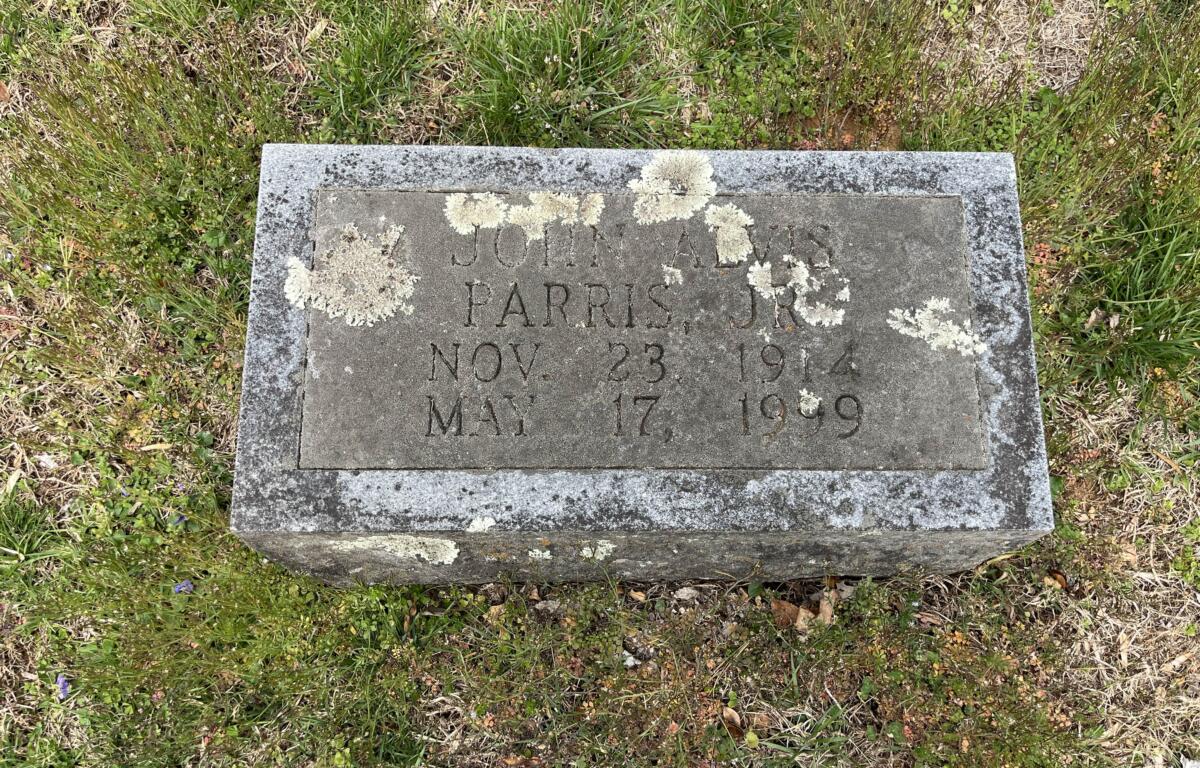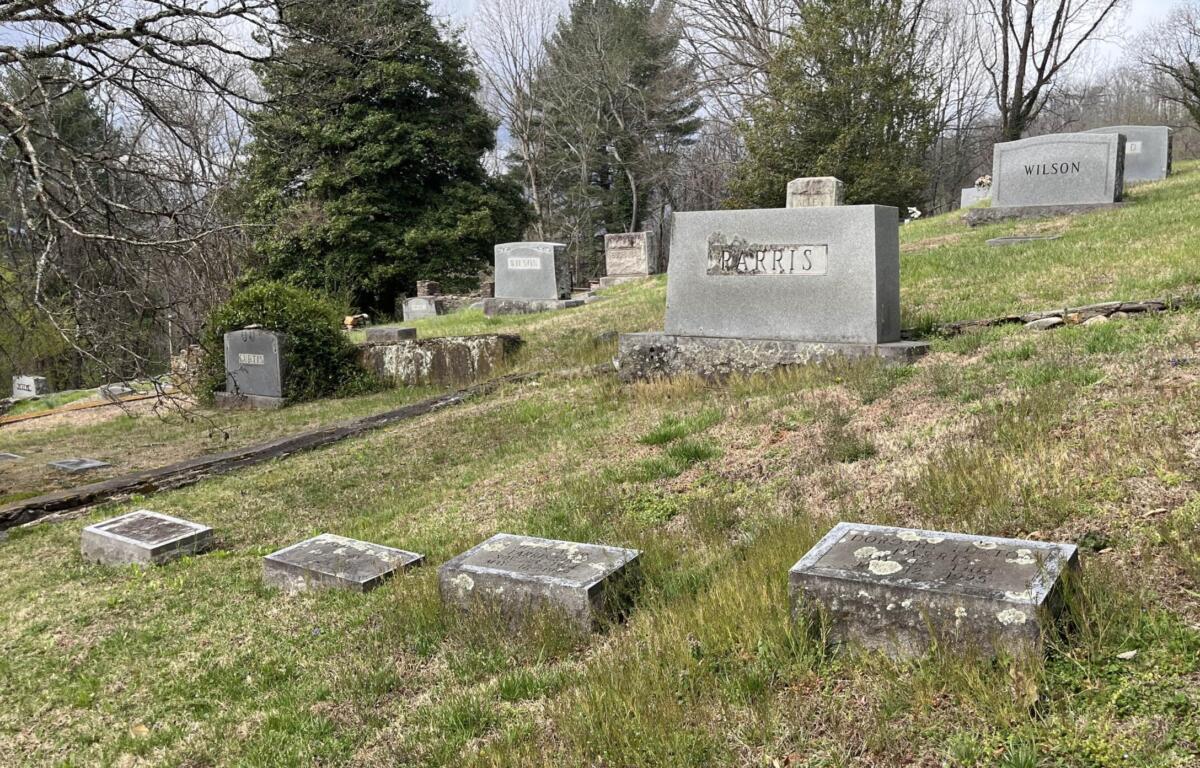EDITOR’S NOTE: Everyone has a story — some more well-known than others. Across Western North Carolina, so much history is buried below the surface. Six feet under. With this series, we introduce you to some of the people who have left marks big and small on this special place we call home.
Known nationally as a prominent World War II journalist, John Alvis Parris, Jr. (1914-1999) narrowed his scope after the war. Focusing on the mountains he was born in, Parris utilized his world-renowned reporting skills for the people he loved most: his neighbors in Western North Carolina. Parris is best remembered for his column “Roaming the Mountains,” which ran for more than four decades in the Asheville Citizen-Times.
___
The roaming reporter
John Alvis Parris, Jr. was born on Nov. 23, 1914, in Jackson County. His family were natives of Jackson County, going back at least five generations. That fact would remain a driving force throughout the reporter’s life.
As the tale goes, Parris “was born prematurely, so small at birth that a shoebox lined with cotton wool served as his crib.” By age 13, the boy would be pulling shoes out of shoeboxes to run across Jackson County writing numerous articles.
It is somewhat surprising that Parris graduated from high school. Not because he lacked the intellect, in fact he likely had more than his instructors. Rather, he was so busy writing for the Jackson County Journal, Asheville Citizen, Asheville Times, and possibly The Ruralite as well, that he could hardly have paid much attention to his studies.
“His real breakthrough came at the age of 16, when he wrote a story about Albert Teaster, a Holiness preacher living on nearby Cullowhee Mountain who let a rattlesnake bite him as a test of faith,” explained Smokey Mountain Living Magazine. “It was an above-the-fold, front-page piece in newspapers across the country. Demands for follow-up material flowed in, and Teaster refused to speak with anyone but the local boy. As a result, Parris was offered a job by United Press (UP), and on his 17th birthday he went to work for them in Raleigh as the nation’s youngest press association reporter.”
Two years in the state capital proved Parris’ value to the UP, who transferred him to New York to write a nationally syndicated Human Interest column.
In 1941, Parris was again transferred, this time to London. The now well-established writer covered World War II, focusing on European monarchs in exile. “Legendary newsman John Parris hung out with Hemingway, skipped whiskey with Churchill and played poker with Ike,” wrote Tony Kiss in his career retrospective for Parris on Dec. 20, 1998, in the Citizen-Times.
“During those hectic years of World War II he lived through the blitz, witnessed the invasion of North Africa [and] was the only journalist allowed to attend the wedding of King Peter of Yugoslavia and Princess Alexandra of Greece,” wrote Smokey Mountain Living Magazine.
Rubbing shoulders with the European elites did not change Parris’ inner calling. His name appeared in bylines on the front pages of newspapers across the U.S., yet he never stopped hearing the mountains calling.
Toward the end of the war, Parris jumped ship to work for the Associated Press (AP), later covering the formation of the United Nations in San Francisco, California. Only a few years later, Parris abandoned his post to return to Jackson County.
For the first half of the 1950’s, Parris worked for the Cherokee nation, writing a history of the people titled, “The Cherokee Story,” and ran the public relations behind “Unto These Hills,” the stage play based on the Eastern Band.
It is hard to say whether Parris loved his wife or the mountains more. Both were on his mind perpetually. He had married Dorothy Luxton Klenk in 1947, a New Yorker. Dorothy was a designer and an artist.
“They had been introduced through a mutual friend, who had given Parris her phone number,” explained Tony Kiss in the May 23, 1999, issue of the Citizen-Times. “He rang her up, asked for a date, grabbed a bottle of whiskey and some flowers, popped over to her place and fell head over heels in love. It was like something you might see on Turner Classic Movies.”

The mountain muse
In 1955, Robert Bunnelle was named the new publisher of the Asheville Citizen-Times. Recognizing the paper’s need for more local perspectives, Bunnelle called his former employee at the AP, John Parris. Parris was onboarded to write four columns per week under the soon to be iconic heading, “Roaming the Mountains.”
The first article was published on Feb. 6, 1955, about a group of rug-hookers in Norton. Within a year, Parris’ column had become so popular that the Citizen-Times published a compendium of his writings. Four more compilation books would be released over the years.
Parris had the series cut back to three articles early on. He kept up the rigorous schedule for 42 years, documenting anyone and anything that informed his views on mountain living. Parris became the de facto face of the Asheville Citizen-Times with his picture next to many articles published. His friendly mustache was a symbol of the culture and history of Western North Carolina.
“Roaming the Mountains” flowed so well because Parris was intimately knowledgeable about the culture he was writing on. He simply wrote about his friends and his home. The brief, insightful and artful columns cut to the heart of the folk lore and sayings that had become woven into mountain culture. The seasoned journalist expounded on local histories and mysteries, the Southern Appalachians and the colorful characters that call them home.
It is hard to understate the popularity of Parris’ column. You could hardly find a single soul in Asheville that would not recognize his friendly smile. Parris was nicknamed the “Muse of the Mountains” by Smokey Mountain Living Magazine. “In many senses he was also the savior of treasured mountain traditions.”
Parris’ accolades are too numerous to mention. He was honored with the highest Belgian civilian award, a Knight of the Order of Leopold II. The king’s token of gratitude paled in comparison to another honor for the author. In 1958, Parris was the recipient of the Thomas Wolfe Memorial Award for his book “My Mountains, My People.”
Retiring less than three years prior to his death, Parris only threw in the towel after deciding he could not physically sustain his art any longer. A stroke had left his hand feeble, impairing his ability to put pen to paper.

Roaming the mountains no longer
On May 18, 1999, John Alvis Parris, Jr. made the front page one final time. The Asheville Citizen-Times honored their irreplaceable columnist with the lead headline. Heartbroken Western North Carolinians read, “Beloved writer John Parris dies.”
Parris had died on May 17, 1999, at Harris Regional Hospital in Sylva. Until the end, he lived in his 150-year-old home unassisted, regularly driving into town for a cup of coffee. In his final four years, Parris lived alone. Dorothy Parris had died in 1995.
In Sylva’s Keener Cemetery, Parris was laid to rest precisely where he wished to lie forever – on a mountain top beside his kin. Marked by a headstone reading “Parris,” the plot is home to the journalist’s father, mother and wife.
“The news knocked me for a loop, though Parris was 84,” wrote Citizen-Times entertainment editor Tony Kiss on May 23, 1999. “It seemed like he would go on forever like the mountains he held so dear.”
“When the old boy came to town, he always stopped by my desk with a compliment on something I’d written,” Kiss recalled fondly. “It was like getting a thumbs up from Mark Twain or Thomas Wolfe.”
“After their deaths an endowment creating the John A. Parris Jr. and Dorothy Luxton Parris Distinguished Professorship in Appalachian Cultural Studies at WCU was announced,” stated Smokey Mountain Living Magazine.
Much of Parris’ belongings were willed to Western Carolina University. As he had no children, the writer saw it fit to donate his items to preservation and study by researchers. Today, the John Parris Collection can be viewed upon request at WCU. The repository includes dated maps, photographs, local artifacts, documents and letters Parris sent throughout his life.
Publishing more books in his lifetime than Wolfe and thousands more articles than Twain, Parris left behind a strong legacy. Nine books and more than 7,000 articles written, he was likely the most read man in Western North Carolina for decades.
Do you know of someone buried in Western North Carolina with an intriguing or uplifting story? Let us know by sending us an email.
If you enjoyed learning about John Parris, you may also enjoy these articles…


